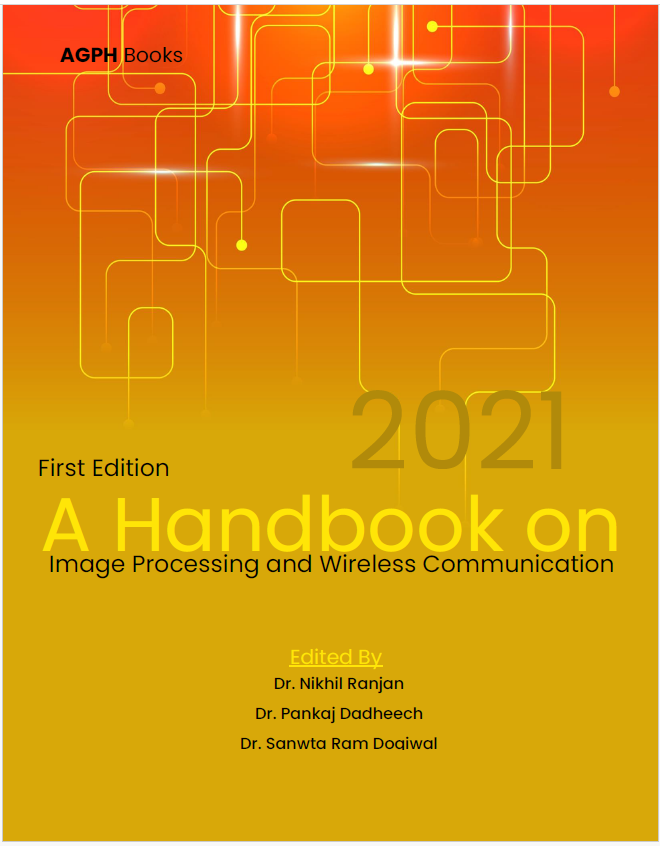A Review on Recent Developments in The GPS Based Localization and Wireless Sensor Networks
Keywords:
WSN, Noise, Multipath, GPS location technologyAbstract
The advancement of the location as well as navigation technologies and procedures has made it easier to locate individuals in difficult and complicated situations. Researchers have been focusing on Wireless Sensor Network (WSN) localization over the last decade or more. A number of recent advances in the GPS location technology are discussed in this article, including applications of such technology in a variety of industries.
References
[1] Adegoke, E. I., Zidane, J., Kampert, E., Ford, C. R., Birrell, S. A., & Higgins, M. D. (2019). Infrastructure Wi-Fi for connected autonomous vehicle positioning: A review of the state-of-the-art. Vehicular Communications, 20, 100185. https://doi.org/10.1016/j.vehcom.2019.100185
[2] Cheng, Y. K., Tao, C. H., Tsang, C. N., Poon, K. C., & Tam, C. N. (2021). Technical note: Calibration of frame intervals of video recorders using Global Positioning System (GPS) signal as time reference. Forensic Science International: Reports, 4(June), 100225. https://doi.org/10.1016/j.fsir.2021.100225
[3] Egea-Lopez, E., Martinez-Sala, A., Vales-Alonso, J., Garcia-Haro, J., & Malgosa-Sanahuja, J. (2005). Wireless communications deployment in industry: A review of issues, options and technologies. Computers in Industry, 56(1), 29-53. https://doi.org/10.1016/j.compind.2004.10.001
[4] Gandhi, G. M., & Rama, P. (2015). GPS based Multi-hop Communication with Localization in Subterranean Wireless Sensor Networks. Procedia Computer Science, 57, 1189-1198. https://doi.org/10.1016/j.procs.2015.07.413
[5] Garg, V., & Jhamb, M. (2013). A Review of Wireless Sensor Network on Localization Techniques. International Journal of Engineering Trends and Technology (IJETT), November. https://doi.org/10.13140/RG.2.2.27308.51848
[6] Kapoor, R., Ramasamy, S., Gardi, A., & Sabatini, R. (2017). UAV Navigation using Signals of Opportunity in Urban Environments: A Review. Energy Procedia, 110(December 2016), 377-383. https://doi.org/10.1016/j.egypro.2017.03.156
[7] Mardonova, M., & Choi, Y. (2018). Review of wearable device technology and its applications to the mining industry. Energies, 11(3). https://doi.org/10.3390/en11030547
[8] Nassar, M. A., Hasan, M., Khan, M., Sultana, M., Hasan, M., Luxford, L., Cole, P., Oatley, G., & Koutsakis, P. (2020). Wifi-based localisation datasets for No-GPS open areas using smart bins. Computer Networks, 180(July). https://doi.org/10.1016/j.comnet.2020.107422
[9] Nellore, K., & Hancke, G. P. (2016). A survey on urban traffic management system using wireless sensor networks. Sensors (Switzerland), 16(2). https://doi.org/10.3390/s16020157
[10] O'Mahony, G. D., McCarthy, K. G., Harris, P. J., & Murphy, C. C. (2021). Developing novel low complexity models using received in-phase and quadrature-phase samples for interference detection and classification in Wireless Sensor Network and GPS edge devices. Ad Hoc Networks, 120, 102562. https://doi.org/10.1016/j.adhoc.2021.102562
[11] Simões, W. C. S. S., Machado, G. S., Sales, A. M. A., de Lucena, M. M., Jazdi, N., & de Lucena, V. F. (2020). A review of technologies and techniques for indoor navigation systems for the visually impaired. Sensors (Switzerland), 20(14), 1-35. https://doi.org/10.3390/s20143935




